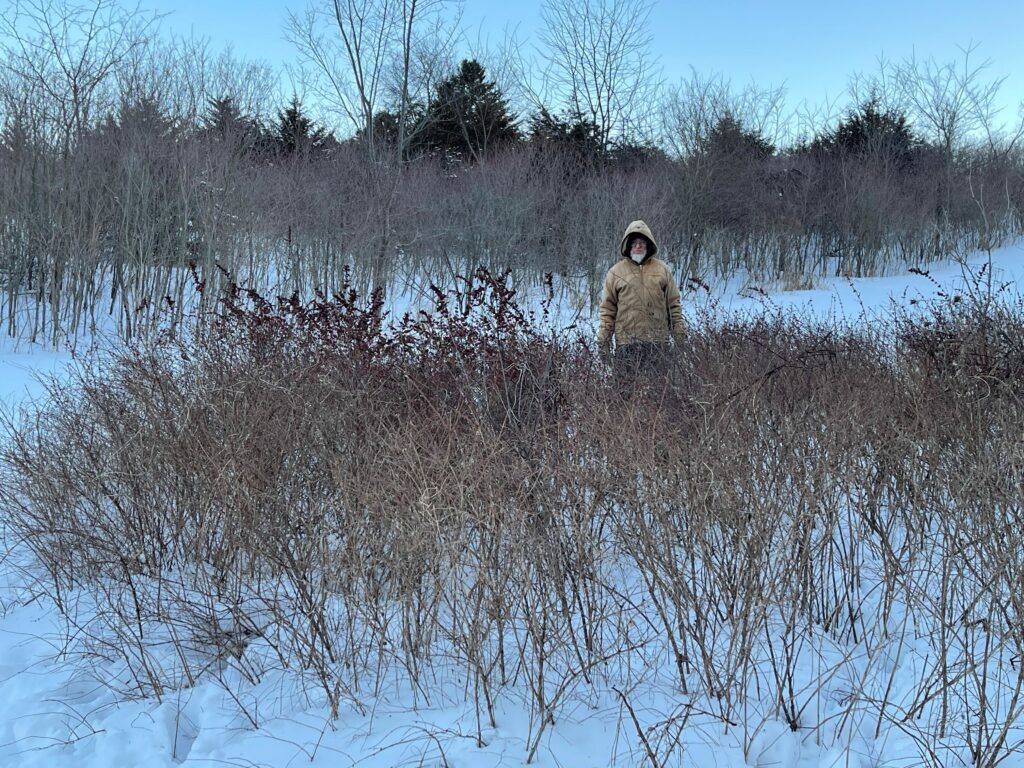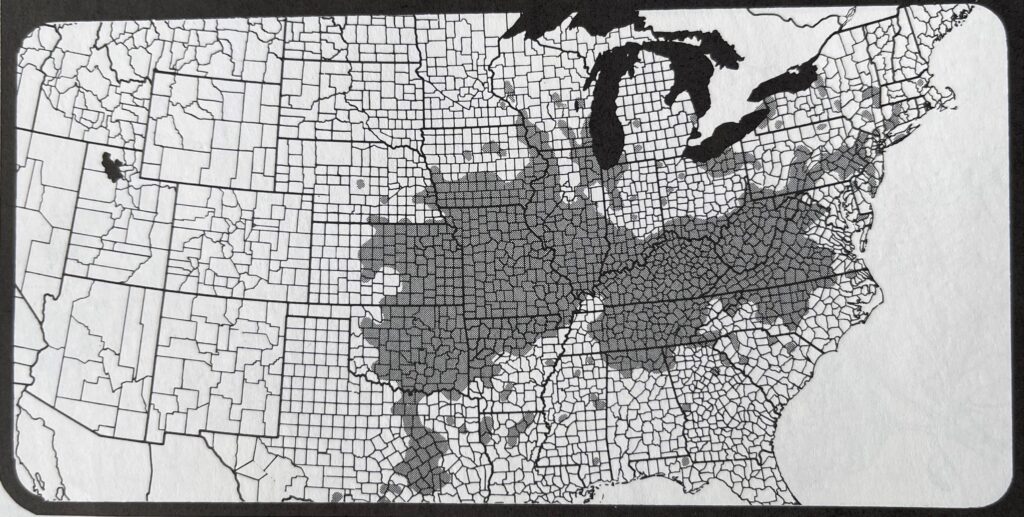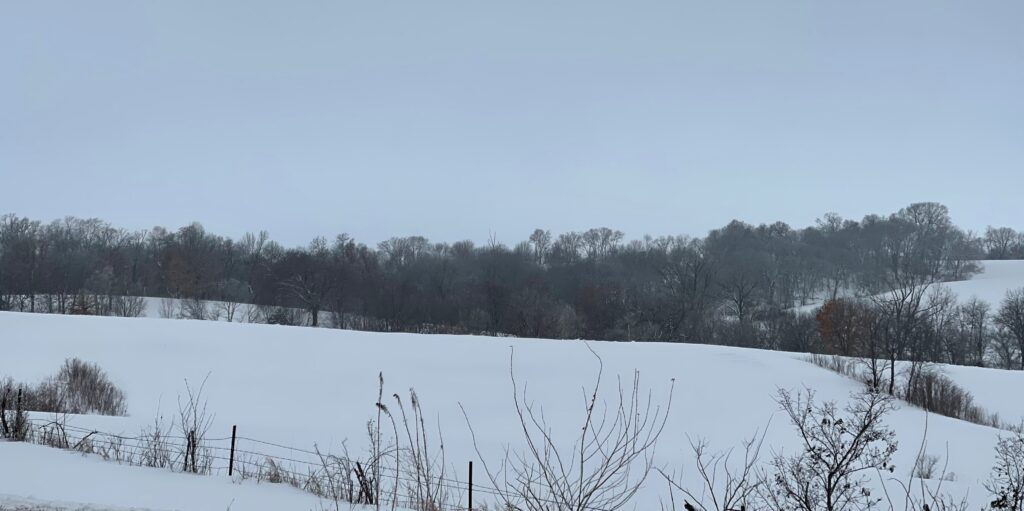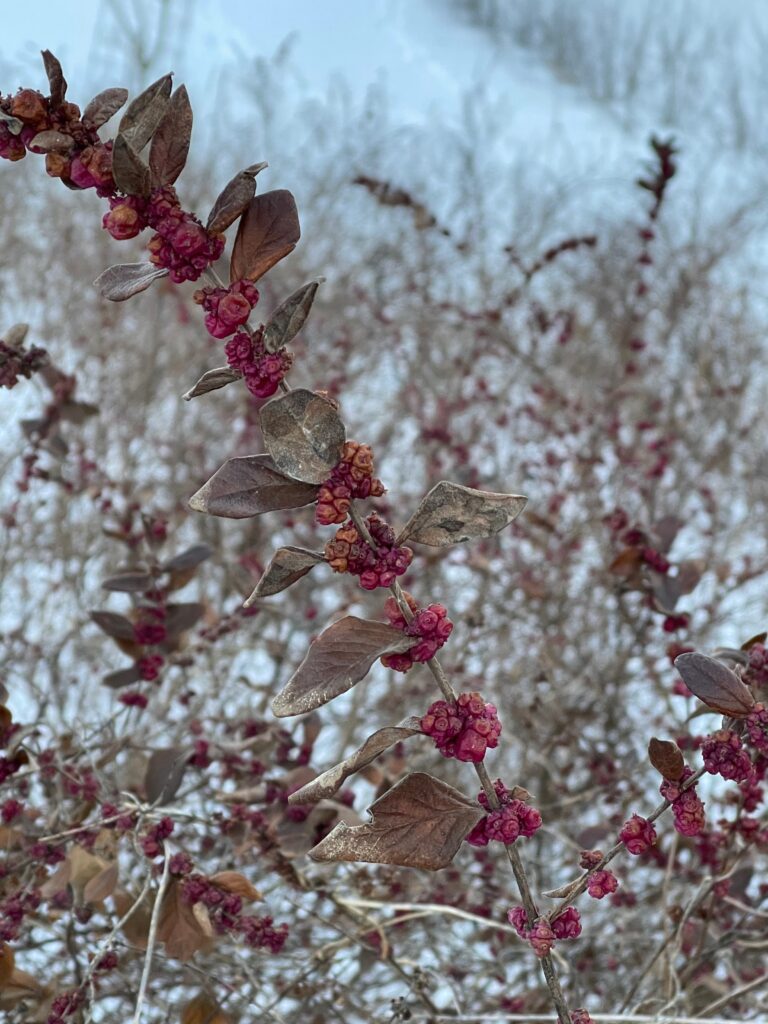Buckbrush and Deer in Winter

Note the small area of buckbrush to my right which still has its tops. The rest of the thicket has already been eaten down to stouter twigs. Photos by Kate Sulentic.
A few years ago, I offered several notes about native coralberry and how this small shrub is useful to birds and pollinators. Its other common name is buckbrush, and this winter it is especially earning this title. This January saw no deep snowfalls here. Rather there were a series of lesser snows accompanied by alternating mild winter temperatures and some colder ones. This produced several layers of icy crusts within the foot-deep snowpack, and deer were unable to break through the layers to access the most nutritious winter foods like fallen acorns, ground-layer rosettes of green leaves and waste corn. So their diet shifted to above-snow items like twigs, buds, bark and pine needles.
This is when buckbrush becomes good survival food for deer. When grown in the open, it often goes into winter with a large crop of small dry edible berries and little edible leaves on a dense maze of fine edible twigs, at a height of about four feet.
Hungry deer in winter eat the whole package of berries, leaves and fine twigs, pruning the top foot or two off the shrub. In favorable locations, the plants tolerate this rather well and recover within a year or two. Individual plants also produce a maze of both fine roots below the soil surface, plus above ground runners which re-root and send up stems near the parent, much like strawberry plants. Transplanting sod chunks of roots and runners makes it easy to create a new habitat thicket of buckbrush.
About six or seven years ago, I started a patch about the size of a two-car garage, low on a grassy hillside. With a bit of mulch plus some mowing to restrain weeds and grass, by 2020 it had become a dense thicket with a good crop of leaves and berries. But by late January 2021, all that remained of the tops was a small area where the growth was the thickest, and the deer were not yet desperate enough to force their way in.

The native distribution of buckbrush, from Gary Hightshoe’s book “Native Trees Shrubs and Vines for Urban and Rural America.”
Buckbrush will also grow in the shade of a woods, but here it is a smaller plant with sparse twigs, leaves and berries. It is one of several shrubby species on standby, waiting for some catastrophe to open up the canopy and let the sun in so that it can flourish for a decade or two before the canopy closes again. But in the meantime, in some winters, deer will prune it back and it will slowly recover. If you want to start a patch of this versatile little native shrub, call me, and perhaps we can set you up with some sod transplants.




